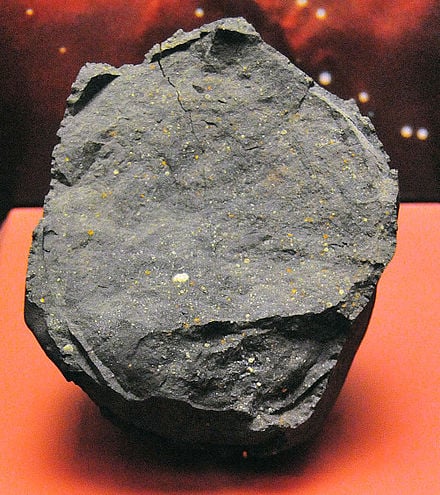Murchison meteorite
The Murchison meteorite is a large meteorite that fell to earth near Murchison, Victoria, in Australia, in 1969. It is one of the most studied meteorites due to its mass (>100 kg (220 lb)), the fact that it was an observed fall, and that it belongs to a group of meteorites rich in organic compounds.
History[edit] On 28 September 1969 at about 10:58 am local time, near the town of Murchison, Victoria, in Australia, a bright fireball was observed to separate into three fragments before disappearing,[1] leaving a cloud of smoke. About 30 seconds later, a tremor was heard. Many fragments were found over an area larger than 13 square kilometres (5.0 sq mi), with individual mass up to 7 kilograms (15 lb); one, weighing 680 grams (1.5 lb),…Read More
